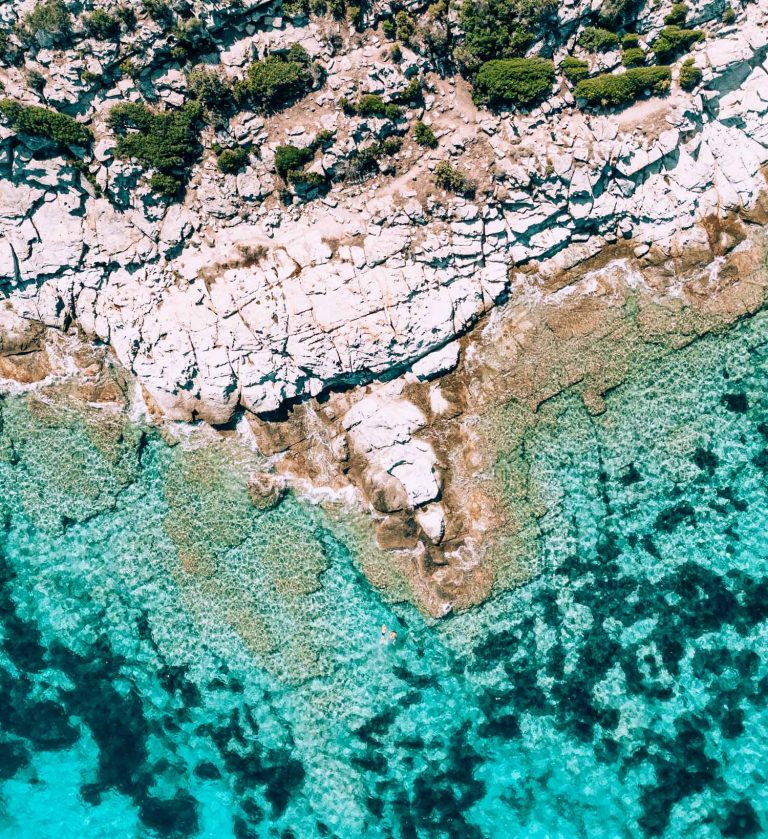Despite Corsica’s rough terrain, its wine making culture is booming, which is why wine tasting is one of the best activities to do on the island. Picture mountain vistas, sunshine and a glass of cold Vermentinu as you nibble on some local cheese and charcuterie.
This Corsica wine tasting guide will not only give a brief summary on Corsica’s viticulture and grape varieties but also dives deep into each of the nine regions, providing a guide on what makes these regions special, which vineyards to visit, and where to stay in each region. All that is left for you is to pick a region or two, book your flights and accommodation, and you are all set for a stellar wine experience.
If you are curious about our experience, then scroll down to the AOP Corse region, where I give you my review of Clos Canereccia. Most of this guide used Vins de Corse – the island’s overarching appellation – as a resource, so make sure to check out their website if you need more information.
Tip! Check out my East Corsica Guide to plan the rest of your trip on the island.
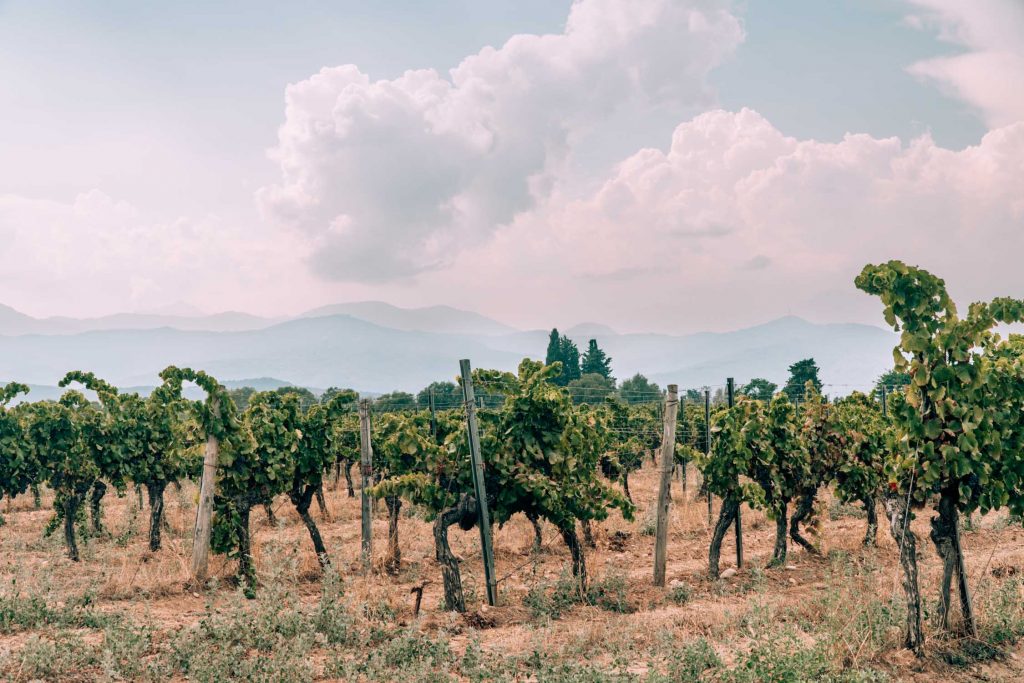
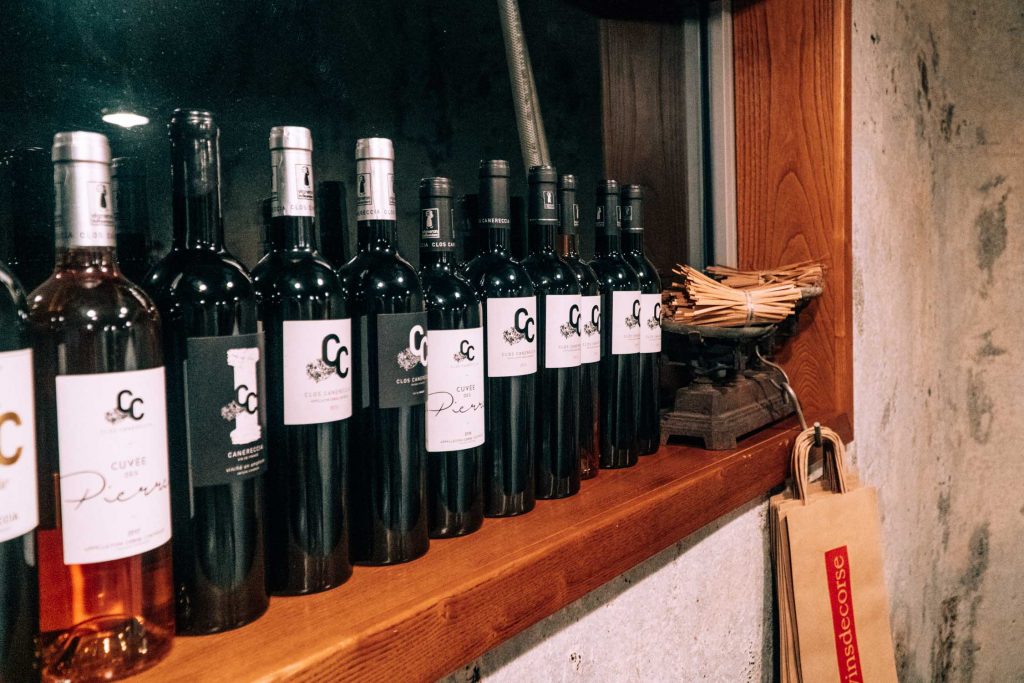
How to Get to Corsica
You can either drive from wherever you are in Europe and take the ferry to Corsica, or book a flight to one of its airports. Ferries leave from Savona, Genua, Livorno and Piombino in Italy and Marseille, Toulon and Nice in France to multiple ports on Corsica. You can book your tickets with one of two companies: Corsica Ferries, or Moby Lines. The latter has Looney Tune themed boats, which are great to travel on with kids. Check your dates and route here to get the best price and connection.
If you are coming from outside of Europe, or the drive is too long, you can also choose to fly into one of Corsica’s airports: Ajaccio, Bastia, Calvi and Figari. These four airports are even located in four different wine regions, making it easy for you to get on the road and try the different wines in no time. I always find Skyscanner the easiest tool to find cheap flights, so check your dates here to book that Corsican wine tasting trip!
How to Get Around
While there is one trainline and some buses, Corsica’s public transport is not great. Which is why bringing your own or renting a car is a must when traveling the island. Furthermore, most vineyards are quite remote, and therefore are not reachable by bus.
Corsica’s roads, and especially in the mountains, are not for the faint of heart, however. They tend to be steep, narrow and windy, with many switchbacks. Therefore, I recommend renting an automatic vehicle if you are not confident driving manual. You can check out which car rental company has the best models and prices for you through DiscoverCars.
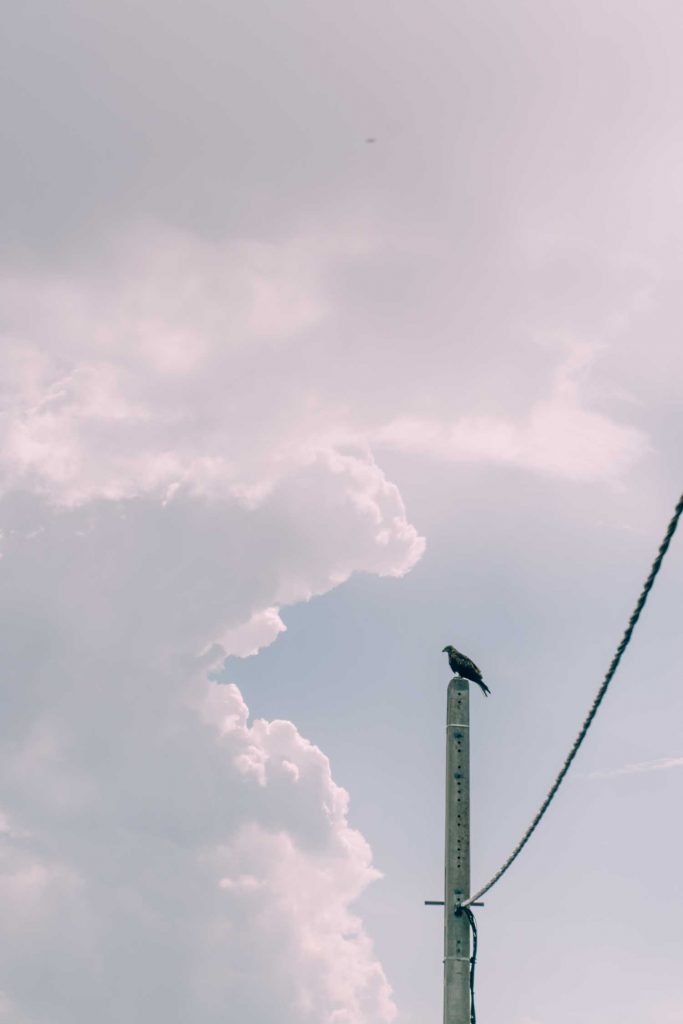

Where to Stay on Corsica
Corsica is full of great accommodation options, but did you know you can stay at a couple of vineyards too? While I have gathered the best places to stay for each wine region below, I have made a list of these vineyards here, for easy access in the future. Furthermore, I have picked my three favorite hotels on Corsica, which you should check out for your next trip!
From villas to hotel rooms with private chefs: these are Corsica’s vineyards that offer accommodation too.
- Domaine de Marquiliani – AOP Corse
- Domaine Vecchio – AOP Corse
- Domaine de Solenzara – AOP Porto-Vecchio
- Clos Canarelli – AOP Figari
- Domaine de Peretti della Rocca – AOP Figari
- Clos Finidori – AOP Figari
- Castellu di Baricci – AOP Sartène
- Domaine Saparale – AOP Sartène
- Domaine Comte Peraldi – AOP Ajaccio
If you plan on booking a hotel instead of a room at a vineyard, I recommend staying at Hôtel la Dimora near Saint-Florent and the Patrimonio AOP. This hotel is located in a former farmhouse turned into a stylish haven with a seasonal restaurant and relaxing spa. Dominique Colonna in Corte is located near the AOP Corse and has beautiful views of the mountains surrounding the city. Domaine de Casanghjulina in AOP Porto-Vecchio also has great views, but this time of the hills and sea around this southern city. They even offer treehouses with an outdoor bath if you fully want to immerse yourself in nature.
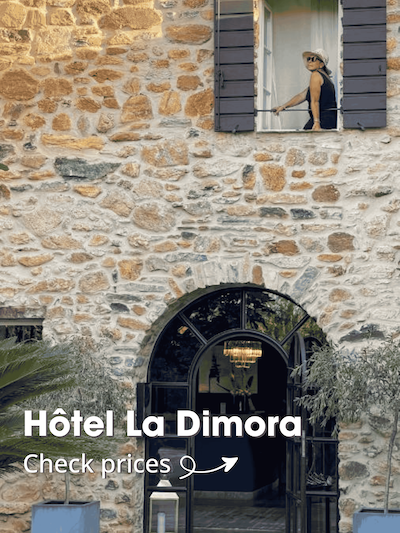
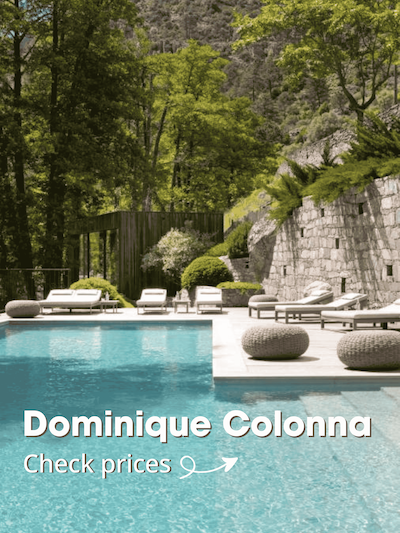
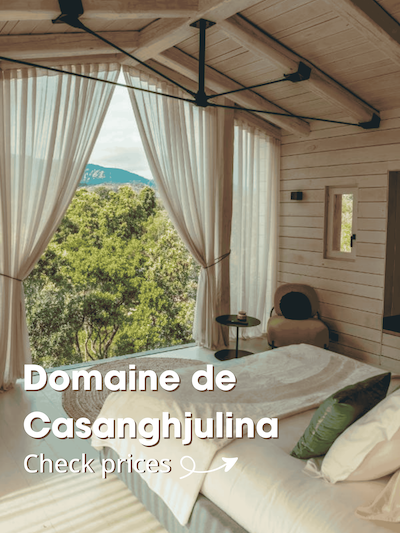
How to Book a Wine Tasting
There is no one way to book a wine tasting on Corsica, but the keyword you must learn is “degustation”, which means tasting in French. Some vineyards will expect you to call ahead, while others have specific forms or even specific tours on offer. If you are short on time, GetYourGuide offers a couple of wine tastings on the island, which often include food pairings or a picnic among the vines.
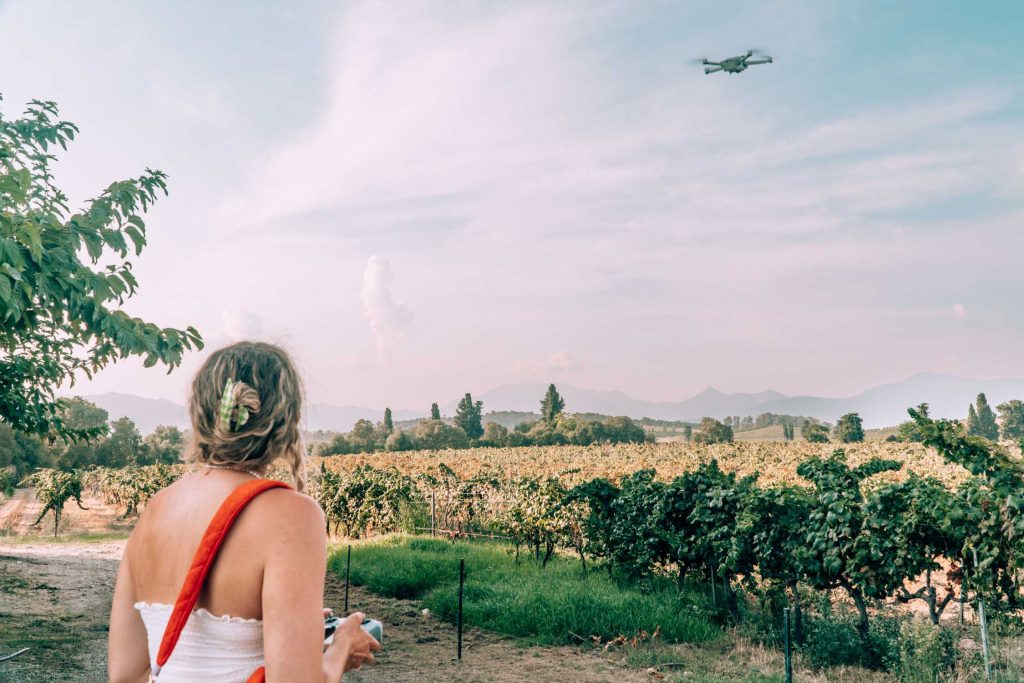
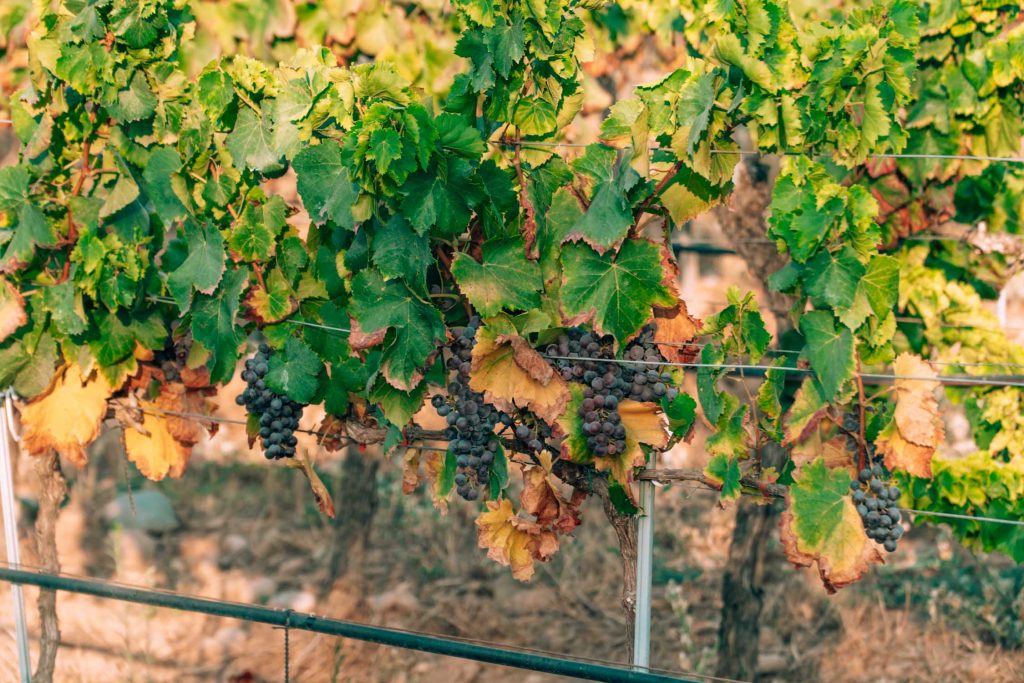
Corsica’s Wine Culture and Grapes
Corsica’s viticulture is ancient: since 570 BC Greeks, Romans, Genoese, French and Corsicans have been drinking and making wine on this small island. Its terroir is diverse. With schist, granite, clay, alluvium and more, the wines produced on Corsica always reflect the soil they have grown on.
Besides the soil, the weather plays an important part in its stable wine production as well. Its Mediterranean climate is softened by the cool breezes blowing over the sea, while the mountains block enough, but not too much, of the winter’s heavy rainfall. With nearly no frost and tons of sunshine, the climate and terroir of Corsica are ideal for vine growing and the creation of authentic wines full of character.
Tip! Book a wine tour ahead of time, that often includes a picnic in the vineyard
Corsica’s Grape Varieties
Corsica has over thirty endemic grapes, of which more and more previously forgotten vines are reintroduced to the island’s landscape. Its most popular two endemic red grapes are Sciaccarellu and Niellucciu, while Vermentinu and Muscat Petits Grains are often chosen for the whites.
The Sciaccarellu is one of the island’s most noticeable grapes, which creates red wines that are elegant, yet offer flavors and notes of pepper, cherry, smoke, orange, raspberries and leather. Its rosés are often very light of color, while its soft tastes resemble flowers, red and exotic fruits, and light spices.
Where Sciaccarellu can be more supple, Niellucciu is its powerful older sister. With notes of black and red fruit, hazelnut, and almonds, and sometimes even coffee, cacao and anise, these reds tend to be strong, yet structured. Its rosés are also lively, with hints of strawberry and cinnamon, but are often trickier to make.


Among white wines, Vermentinu is the most popular, and in some regions even a mandatory part of the production. The wines themselves are often complex, with lots of white and yellow floral notes, fruits like apple and pear, almonds and sometimes even hints of citrus. They often are refreshing yet strong-bodied, with some minerality at times.
While you can read more on the Muscat Petits Grains under its specific AOP below, you can find other endemic grapes on Corsica becoming more popular as well. Among the whites we can find the Genovese, which is often light yellow of color, has a well-balanced flavor and has aromatic notes of white flowers, apple, pear and citrus, and the Biancu Gentile, which can be very fresh, but also as flexible to different vinification methods like the Vermentinu.
Among the reds, you can find: the Barbarossa, which can most often be found in rosés with notes of hawthorn, mint, smoke and citrus; the Carcaghjolu Neru, which produces earthy and spicy reds, and rosés with hints of light caramel, and; the Minustellu, which produces reds with black and red fruits, almonds, mint and cacao. The last one is not often used as the base for rosé, but in a blend with Sciaccarellu or Niellucciu.
Winemakers also use import grapes, like Grenache and Syrah, but you will find that most vineyards prefer the Corsican grapes. Now you have a basic understanding of what grapes you can find on the Île de Beauté, we can dive into the island’s wine regions.

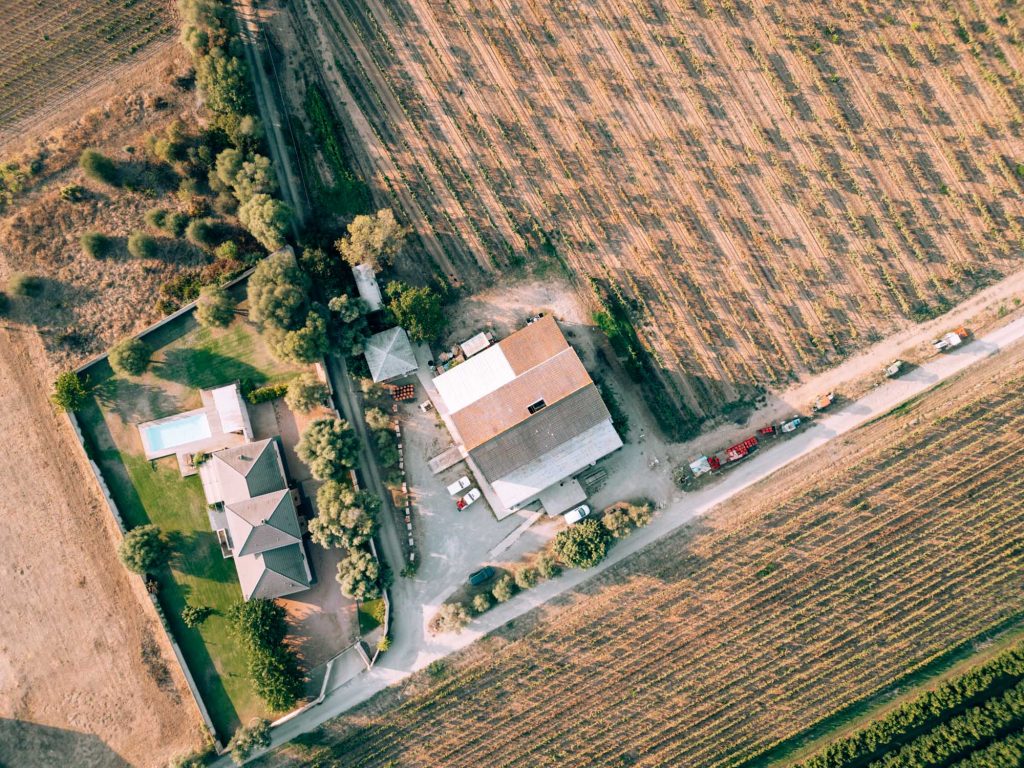
Corsica Wine Tasting Guide: The Wine Regions
Corsica has nine wine regions in total, which are called AOP’s: Appellation d’Origine Protégée. These areas are meant to protect and preserve the quality of wines made in a specific area, climate and terroir. If you find yourself at a winery without the AOP label, you have most likely stumbled into one with the L’Indication Géographique Protégée (PGI) Île de Beauté which covers the entire island. Sometimes, some wines of AOP vineyards only have this label, as these bottles are often more personal blends created by the winemaker or include endemic grapes that have not yet been recognized by the AOP. Either way, you cannot go wrong!
As this small island produces so much wine, I have summarized what makes these regions special below, to help you choose the best place to go wine tasting on Corsica. Each region includes tips on where to stay, what to do and which wineries to visit, so make sure to read all of it, as there are some special tips hidden in there.
1. Corse Côteaux du Cap Corse
If you have read my East Corsica travel guide, you know Cap Corse is a beautiful region to visit. With rugged coastlines, Genoese towers everywhere and adorable fishing villages, this northernmost tip of Corsica also has a special wine culture.
Tip! Explore Cap Corse by boat from Calvi or l’Île-Rousse
The mild winters and hot summers of the classic mediterranean climate and heat conduction offered by the largely slate terroir create a perfect balance needed for steady wine making. Within this AOP, mostly white wines are produced, with the vermentinu grape being the most common. The combination of the grapes, climate and terroir create floral wines which often have some minerality too. Its reds and rosés are largely made of the niellucciu, sciaccarellu and grenache grapes, which offer strong-bodied wines with notes of red fruit.
Despite its well-balanced climate and terroir, there are only five winemakers here that fall under the AOP: Domaine de Gioielli, Clos Nicrosi, Clos Paoli, Domaine Pieretti and Domaine de Pietri. Clos Nicrosi is a designated organic vineyard, and while Domaine de Gioielli is not labeled organic, they do not utilize any chemical pesticides, harvest the grapes by hand, and let grasses grow in between the vines to invite more biodiversity on their grounds.

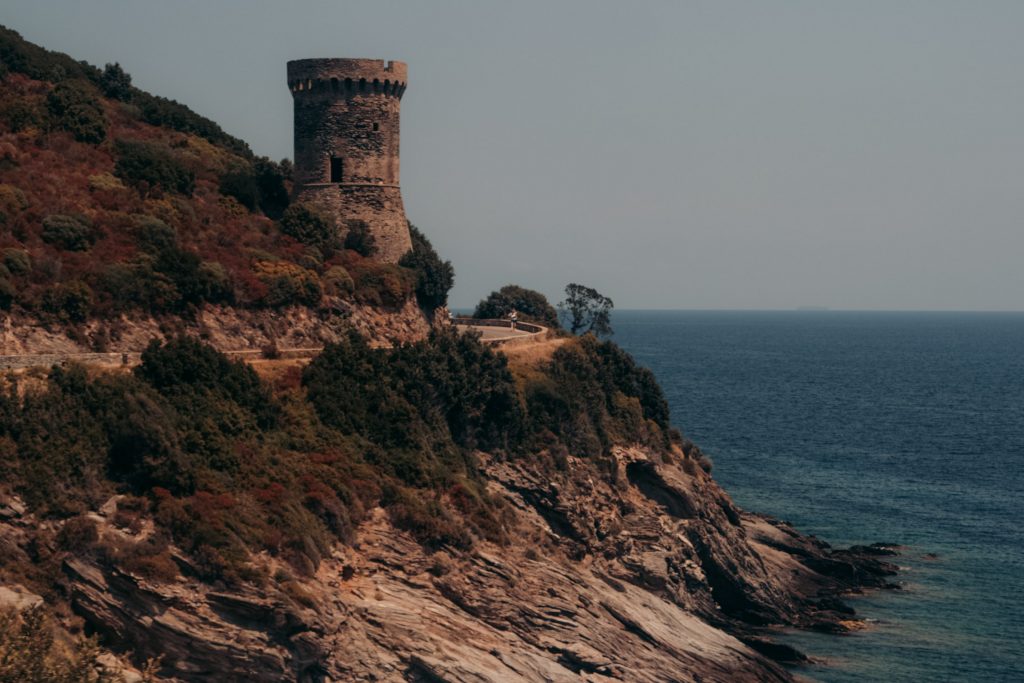
Where to Stay in Cap Corse
If you like to stay close to Domaine de Gioielli and Clos Nicrosi, I recommend booking your accommodation in Macinaggio. You could choose an apartment with a pool at the Charmant Logement just outside of town, or stay in the village at Stella Marina.
I have already mentioned this gem in my East Corsica guide, but the luxury resort Misincu is one of the top stays on Corsica. Lucky for you, this gorgeous hotel is only a stone’s throw away from Domaine Pieretti.
If you prefer the Western side of Cap Corse with Clos Paolu and Domaine de Pietri around the corner, I recommend you stay at the very special Torre di Ciocce. This bed and breakfast is located in a Genoese tower and is therefore one of the most unique stays on the island.
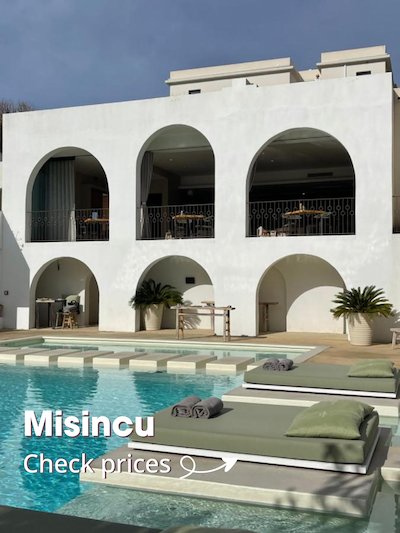
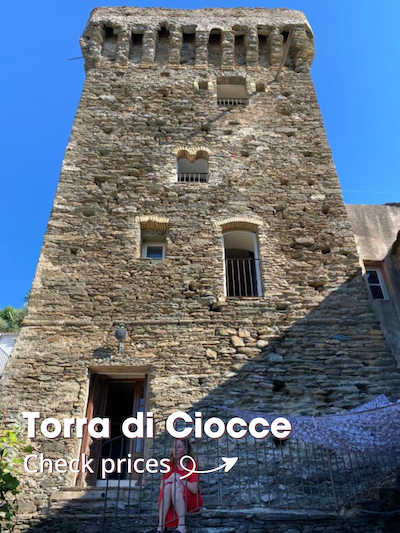

2. Patrimonio
Patrimonio was the first region to gain an appellation (AOP) on the island. It stretches from the town of Patrimonio in the east to Casta in the west and incorporates the gorgeous town of Saint Florent, a must visit in the region. This area of Corsica is known for its white sandy beaches, cliffs and constant sun, making it the perfect vacation and wine destination.
Follow in our footsteps! Sail to the beaches of the Desert des Agriates with Sailingmaures
What makes this region so special is that most farmers are dedicated to organic farming and production, proved by the fact that Roundup is banned here. Combined with the special climate and terroir – mediterranean weather with a large difference in temperature between day and night, and soil largely made up of chalk, clay and limestone – the wines of Patrimonio are multifaceted and unique.
The production is equally divided between red, whites and rosés, of which each bottle is subject to strict requirements. The white wines must solely be made of Vermentinu, while the reds should at least be ninety percent Niellucciu. The other red grapes that are used to blend are Sciaccarellu and Grenache. This gives each red a powerful flavor, while the whites are often fruity yet graceful.
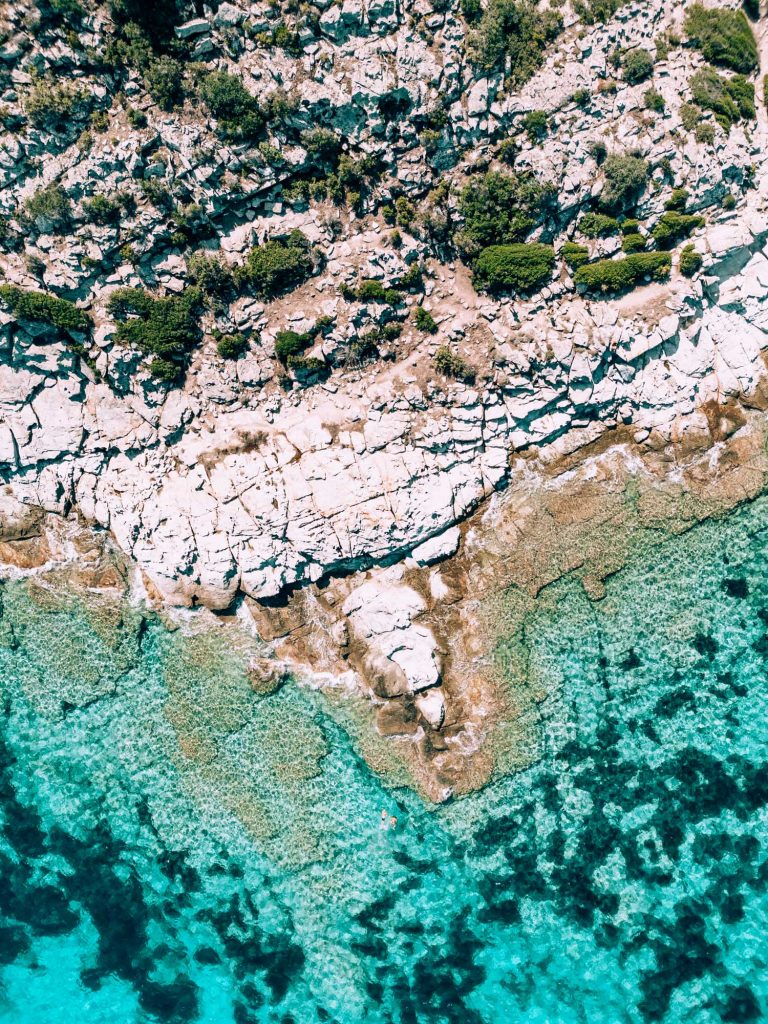
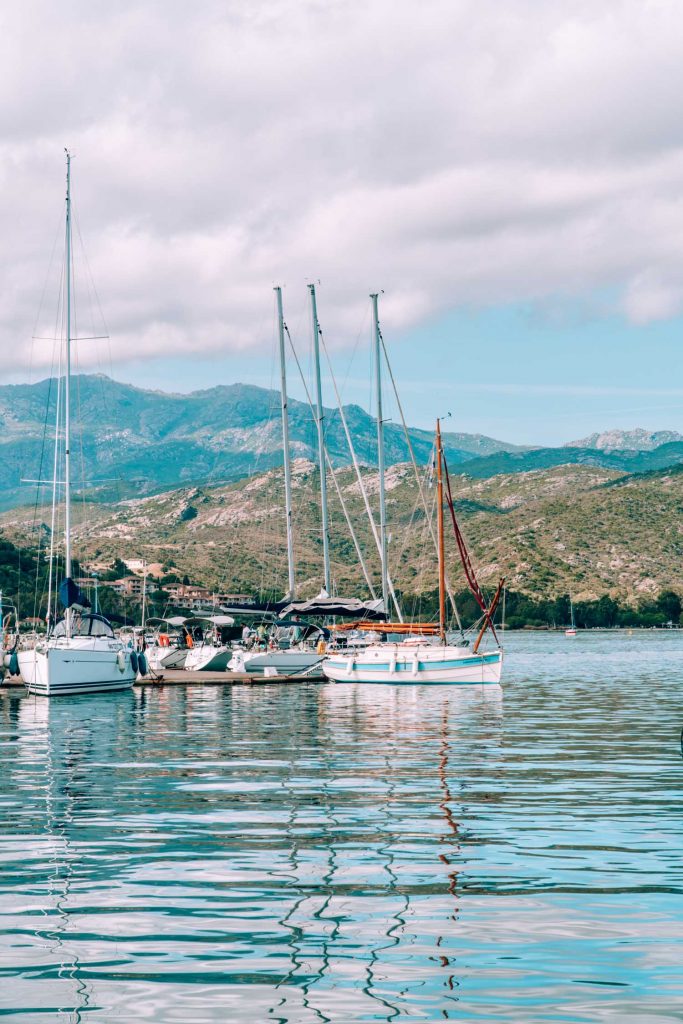
Most vineyards are located in and around the town of Patrimonio. Here, the Domaine Arena, Domaine Orenga de Gaffory, and Domaine De Murtone are my top picks, as they offer gorgeous views while sipping refreshing wines. If calling vineyards to make reservations sounds daunting, however, there is a great wine tour in Patrimonio and Saint-Florent which includes a picnic among the vines. How romantic?
Saint-Florent has some nice vineyards too, which I have mentioned below, but if you like to get off the beaten path I recommend going to Casta or Oletta. Casta has Clos Teddi, which is run by a woman named Marie-Brigitte (always support women-owned businesses), which serves its wines at top restaurants all over the world. In Oletta, you can find Domaine Stéphane Bertolezzi, which offers lovely wine tastings in the village itself.
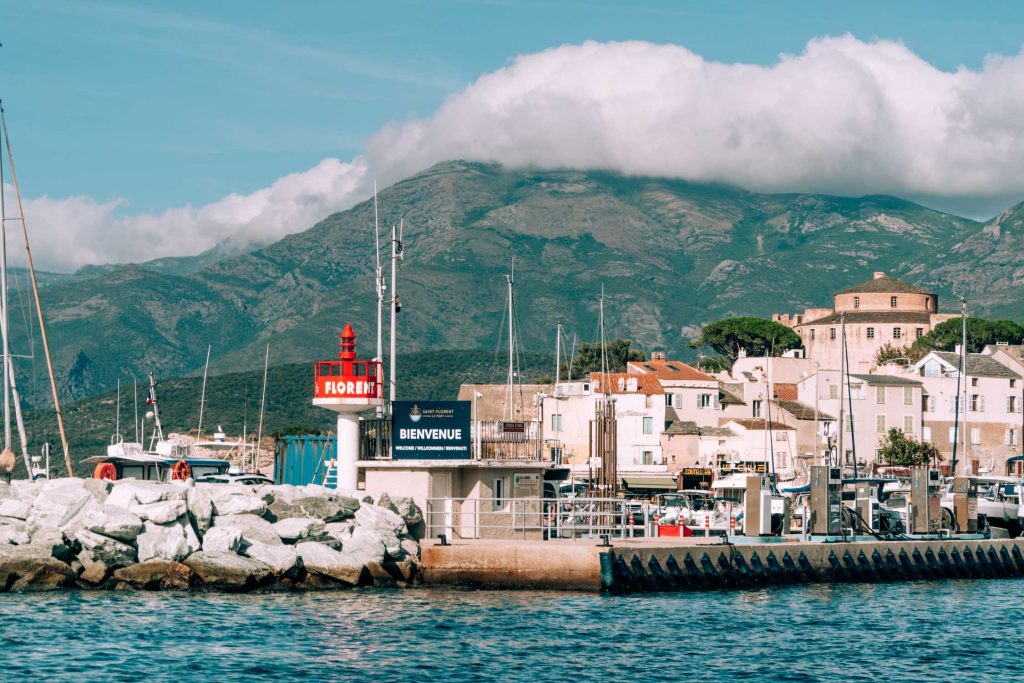

Where to Stay in the Patrimonio Region
As mentioned above, Patrimonio itself offers tons of vineyards, which is why staying here is the perfect option for all of your wine tasting. Auberge Lustincone offers cozy rooms and a pool overlooking the mountains, while Hôtel la Palma is located in the village and offers a more budget-friendly option. If you have read my East Corsica travel guide, you know I loved Saint-Florent. Also known as the Saint Tropez of Corsica, this beach town has some delicious restaurants and cute shops plus two nearby vineyards: Domaine Gentile and Clos de Bernardi. For a luxury stay, you should choose Hôtel La Dimora & Spa, but if you want to stay within the town on a budget, I recommend Hotel Santa Maria.


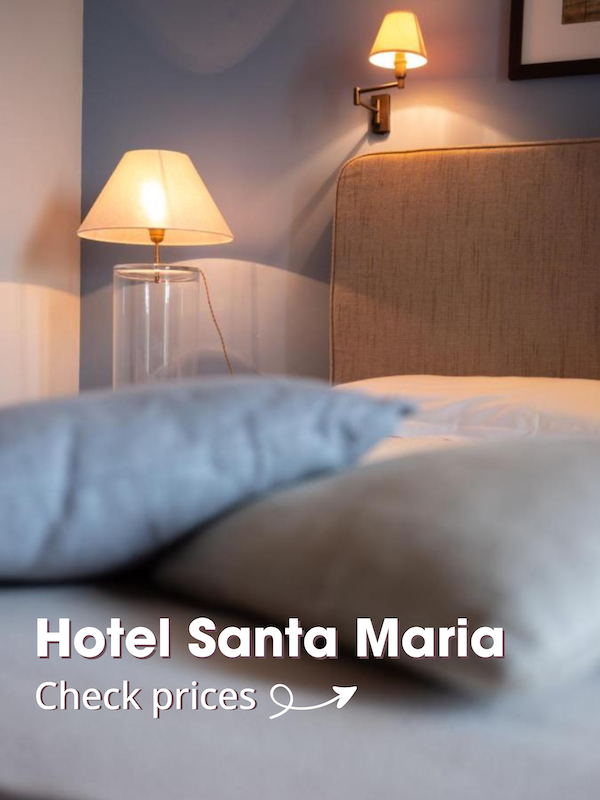
3. Muscat de Cap Corse
This special grape deserved a separate AOP on Corsica. The Muscats à Petits Grains, also known as muscat blanc, produces naturally sweet white wine that is often yellow and orange of color. Despite its sweetness, it is still a soft wine, and its notes of dried fruit and citrus often pairs well with a light apéritif or desserts that are not too sweet, like vanilla ice cream or a fruit pie. It is also incredible with soft cheeses or light blue cheeses.
The Muscats à Petits Grains on Corsica only grows in Cap Corse and the Nebbiu region, which is the inland area from Saint Florent, and which includes parts of Patrimonio as well. There are 21 AOP wine makers in this region, with only six of them in Cap Corse: Casa Angeli is namely added to the other five vineyards mentioned under the Cap Corse region.
The others can be found near Patrimonio, which include many winemakers that produce reds, whites and rosés as well. Domaine Lazzarini has a good selection of wines and a quaint shop to pick up some bottles. Or try family-run Domaine Montemagni where you can have a tasting in their winery amidst the fields.
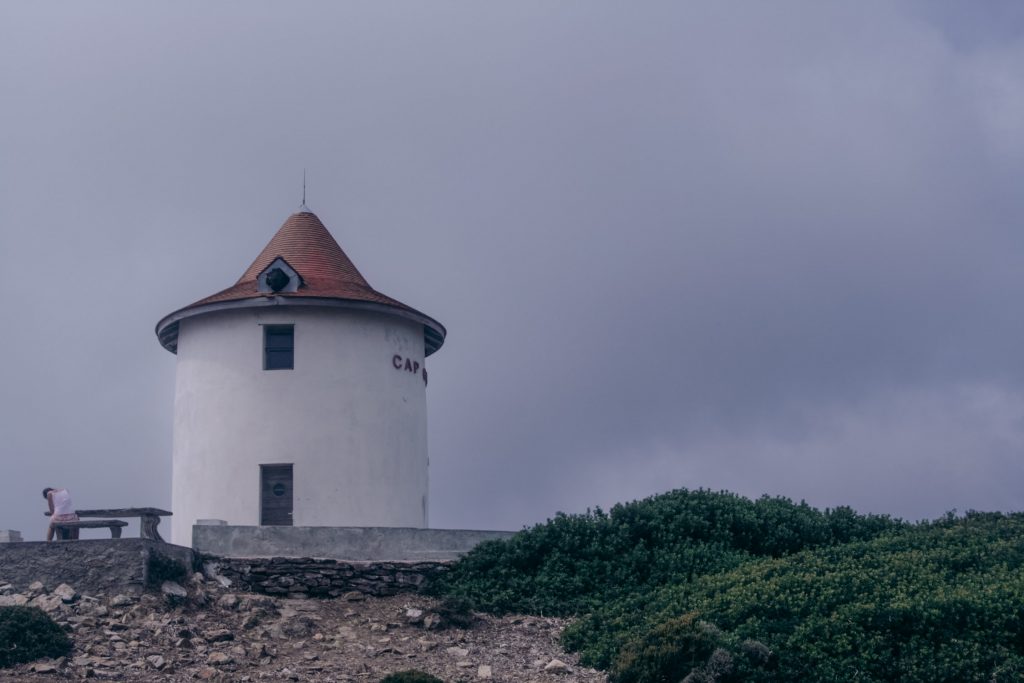

4. AOP Corse: From Bastia to Solenzara
The eastern, and only, plain of Corsica, was one of the stars of my East Corsica guide, as it provides the perfect terrain for agriculture. The great food, farmer’s markets and delicacies combined with long sandy beaches, makes it the perfect destinations for foodies and culinary travelers.
Tip! Go on a food tour in Bastia to learn all about East Corsican cuisine
Stretching from Bastia to Solenzara, the AOP Corse is filled with hills and plateaus protected by the mountains of Haut-Corse to the west. The largely clay soil that is both compact and loose (which Vins des Corse refer to as tertiary soil and alluvium for my geology loving readers) combined with the steady Mediterranean climate creates solid wines that are said to be Corsican of character. Think of smoke, pepper and fruit, and remnant of the smell of the maquis covering the island.
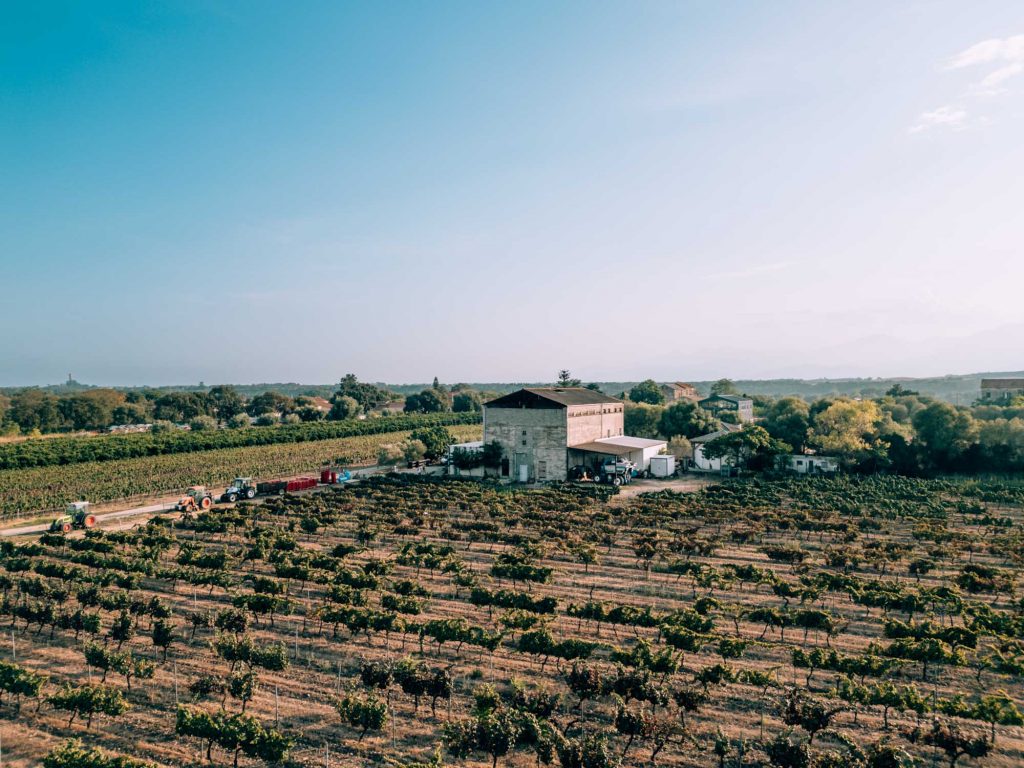

76% of the wines produced are rosé, with the grapes being of great variety: from endemic to foreign, you will find unique blends and tastes at each vineyard you visit. Most of these wineries fan out from Aléria, which is where we visited the organic vineyard of Clos Canereccia, my number one tip in AOP Corse.
Theirs is a family business that welcomes you in as soon as you knock on the door. 20 of their 22 hectares grow endemic grapes, while the other two grow syrah. We tried all of their wines, of which only two bottles were red and most of them were a great variety of whites and rosés. They had extra special bottles of wines aged in amphora, which are terra cotta pots that the ancient Greeks used to use, and therefore a great option for those wine lovers looking for something unique.
Besides the many vineyards around Aléria, you can also find Domaine Vico close to Ponte-Leccia on the road to Calvi, which offers wine tastings on their website. Further towards Bastia you will find Borgo, which hosts the Domaine Falcucci and the cooperation Vignerons Corsicans.
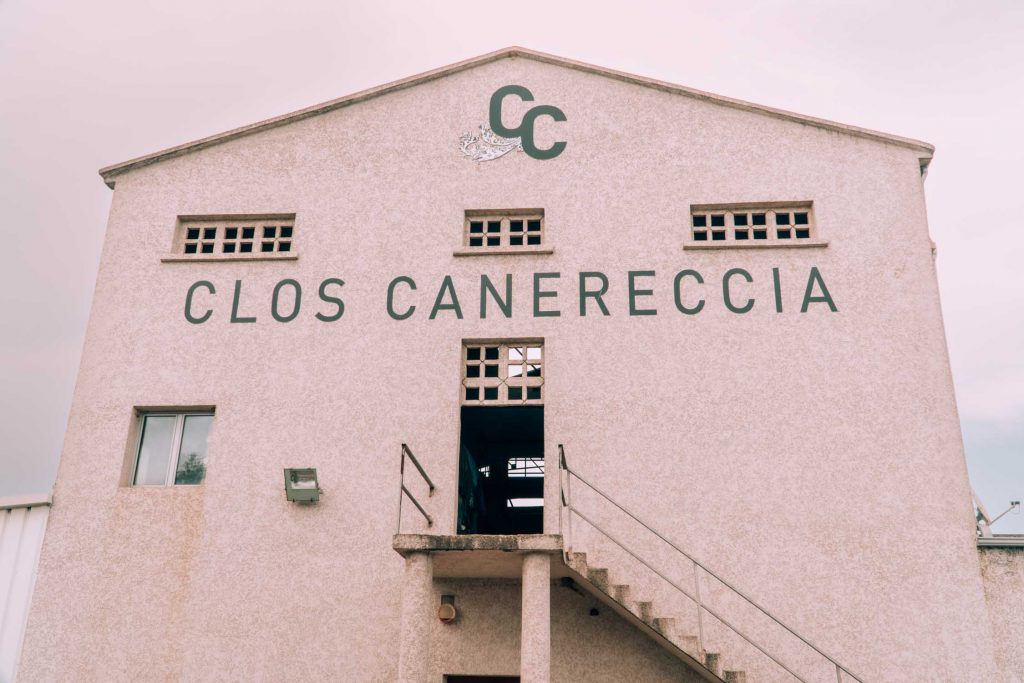
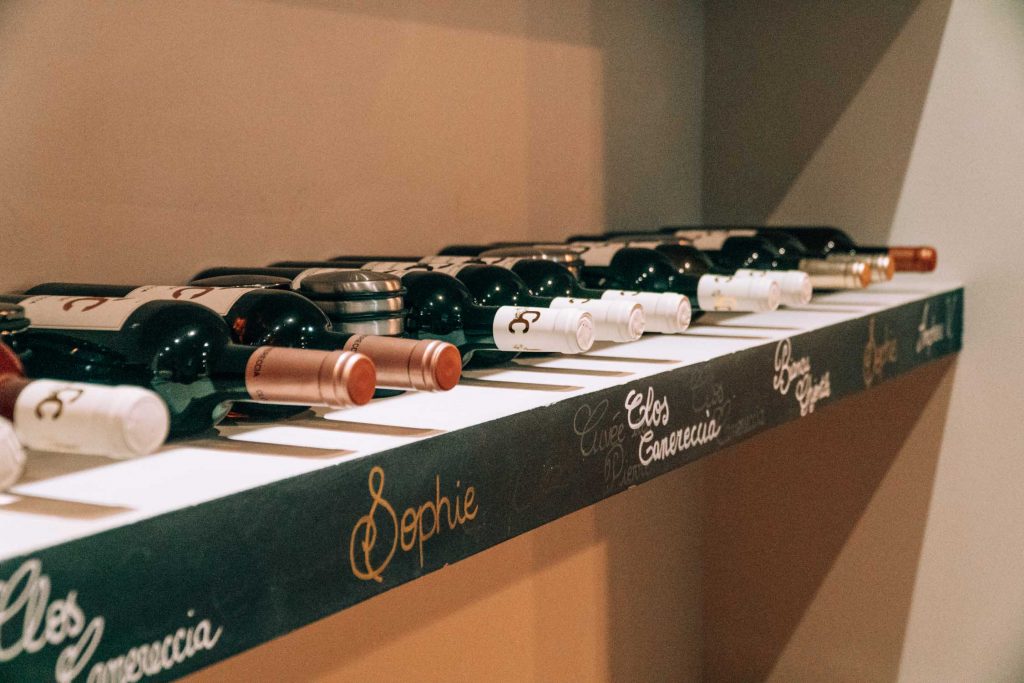
Where to Stay in the AOP Corse Region
Before heading into the best hotels, there are two vineyards that offer accommodation as well, so you can walk home after a long day of wine tasting. Domaine de Marquiliani offers chalets and suites with a true Corsican cottage charm. Domaine Vecchio has similar options on display, which they call gîtes.
If you want to explore Bastia and the regions vineyards, Borgo is your best bet on finding good accommodation. Hôtel Spa Restaurant La Madrague has, besides modern and comfortable rooms, a stellar restaurant where you can already sample the wines of AOP Corse. Hôtel Résidence a Torra has more affordable prices, but a refreshing pool as well.
Tip! If you stay in Bastia, book a guided walking tour to discover its history
Stay in Aléria if you wish to discover more of the island’s delicacies and farmer’s market, including some secluded beaches. The Résidence Marina Di Bravone offers apartments overlooking the ocean, while the vineyard Demeure de charme Suarella Domaine de Marquiliani has an entire villa for you to enjoy with friends and family.
Can’t decide? Stay in between the two towns at Levolle Marine, a spacious hotel right on the beach.
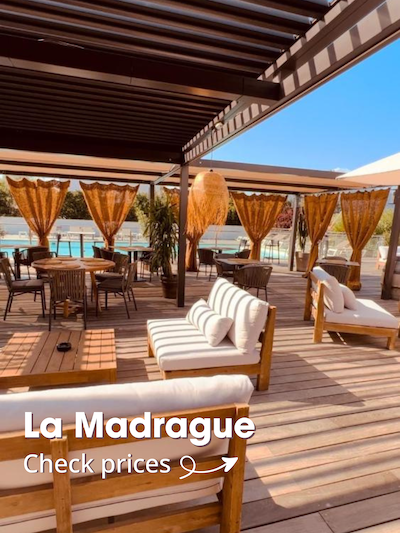
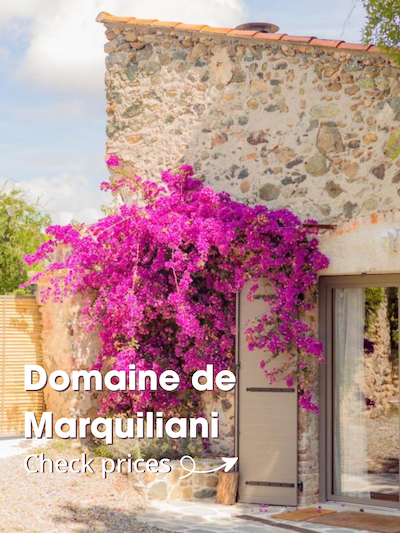
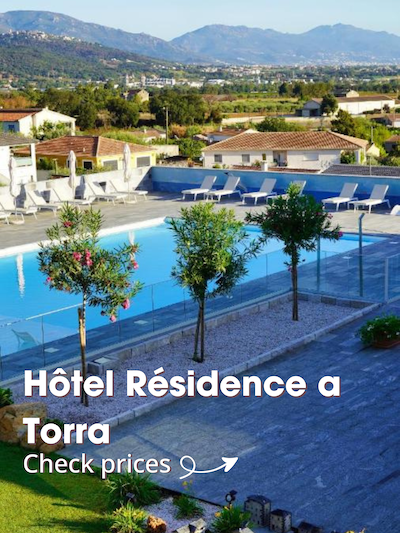
5. Corse Porto-Vecchio
Like Cap Corse, the AOP of Porto-Vecchio is a village appellation, and just like the northern tip, it is quite small. Still, Porto-Vecchio is worth visiting, if only for its city perched on a mountain and quaint harbor. If you have read my East Corsica guide, you will know its cute streets, fresh seafood restaurants and design shops are a must visit.
With granite and limestone soil and lots of wind due to its proximity on the ocean, life for the vines of this AOP can be tough. Combine the rough conditions with the stamina of its winemakers and the endemic grapes that are grown here, and you find yourself tasting some of Corsica’s most characteristic wines.

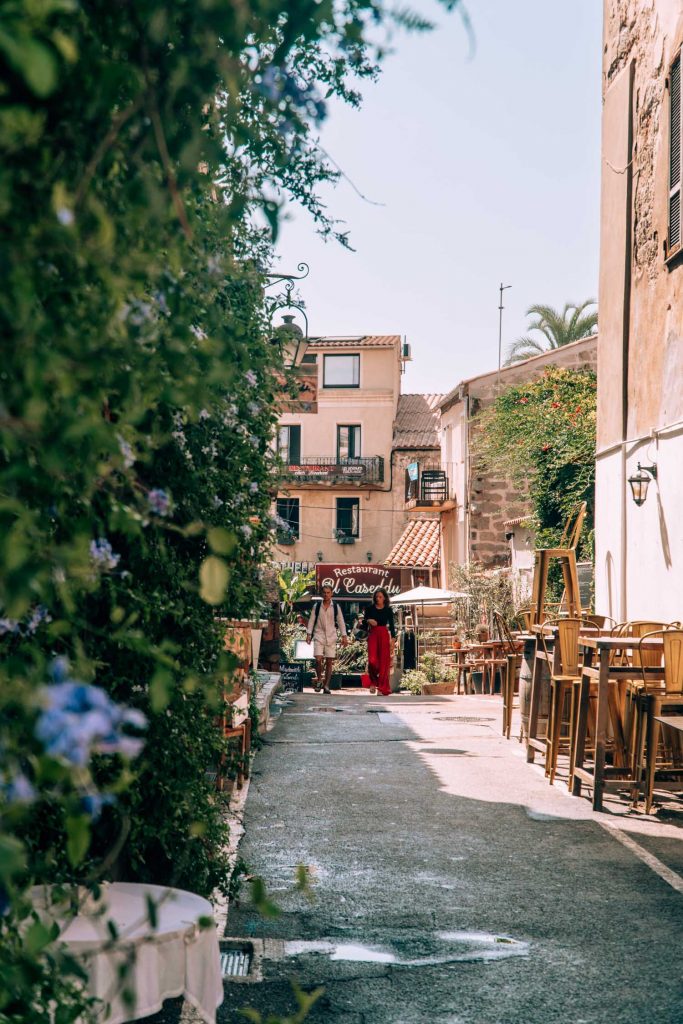
The reds and rosés are mostly made of Niellucciu, Sciaccarellu, and Grenache. According to the Vins de Corse, the reds are elegant and taste like the scent of the maquis, Corsica’s scrubland. The whites are, again, mostly Vermentinu, and together with the rosés have body despite their fruitiness. All wines, however, often have some other Corsican grape hidden somewhere, which gives them their unique taste.
Tip! Combine your wine tasting with a culinary sailing tour
Because this appellation is so small, there are just four vineyards: Domaine Fior Di Lecci, Domaine de Granajalo, Domaine de Solenzara, and Domaine de Torraccia. Domaine de Solenzara also offers vacation rentals, which makes this a unique winery to spend a considerable amount of time at.
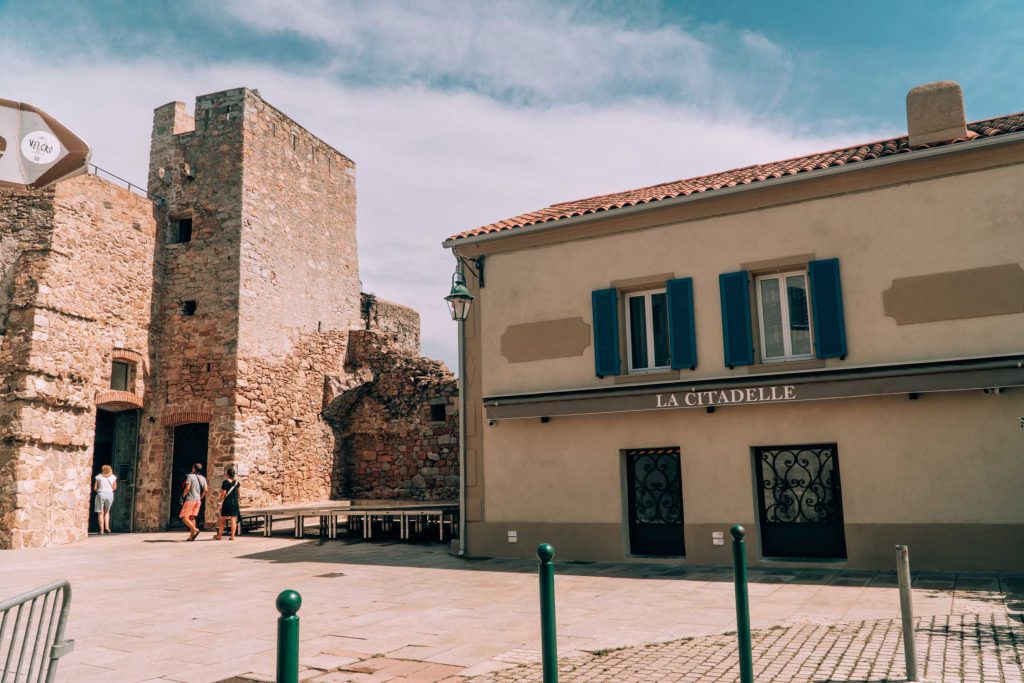
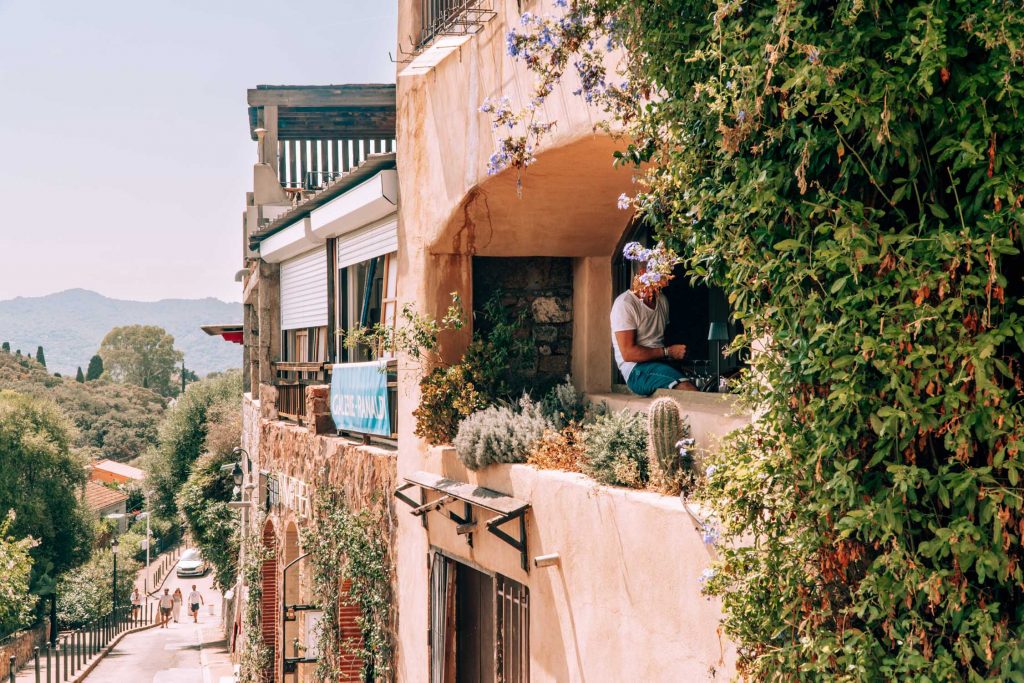
Where to Stay in Porto-Vecchio
It may be Porto-Vecchio’s elegant and bougie charm, as the city has some stellar accommodation on offer. My absolute favorite is Domaine de Casanghjulina, a hotel just outside Porto-Vecchio and which has dedicated itself to sustainability in luxury. You can book fabulous tree houses with outdoor baths here, or spend your nights in their old farmhouse.
La Balamina is another luxe hotel, but this time located on the outskirts of Porto-Vecchio and thus overlooks both the mountains and the city. If you prefer to have your window overlooking the ocean however, I recommend Casa Santini x Roc Seven, which has been designed in a modern boho style.

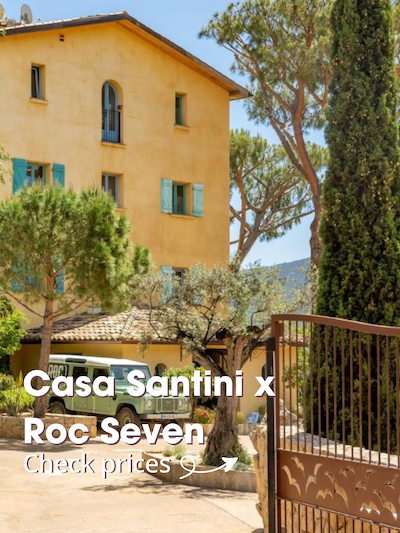

6. Corse Figari
The appellation of Figari, another village appellation, is centered around Bonifacio, Corsica’s southernmost point. The city itself is stunning: with a citadel perked on top of a cliff resembling Dover and a harbor that has protected Corsica for centuries. Even its viticulture is considered to the island’s most ancient.
Besides being the most southern and ancient, Figari is also the hardest region to grow vines in. Harsh winds, storms and blinding sunlight occasionally wreak havoc here. Still, the winds prevent most of the mildew and the soil is incredibly fertile, which is why wine has been made here for over twenty-five centuries.
Tip! Check out Bonifacio and go on a boat trip to the Lavezzi islands
The wines themselves are super diverse, as each winery makes different blends. Besides Nielluccio, Sciaccarellu and Grenache, the winemakers of Figari blend their reds with the Corsican Aleaticu, Barbarossa, Carcaghjolu neru and Minustellu grapes. Combined with the terroir, this creates well-balanced reds and rosés, of which the reds tend to age well. For their whites they use Vermentinu, Biancu gentile and Ugni Blanc, that together make floral wines with notes of tropical fruit.
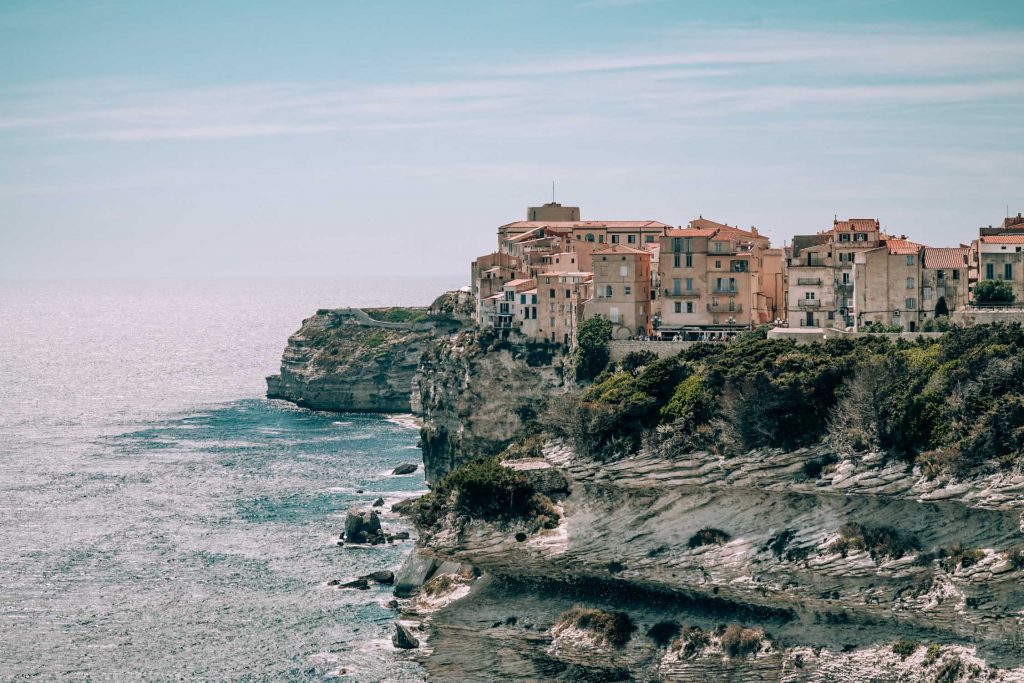
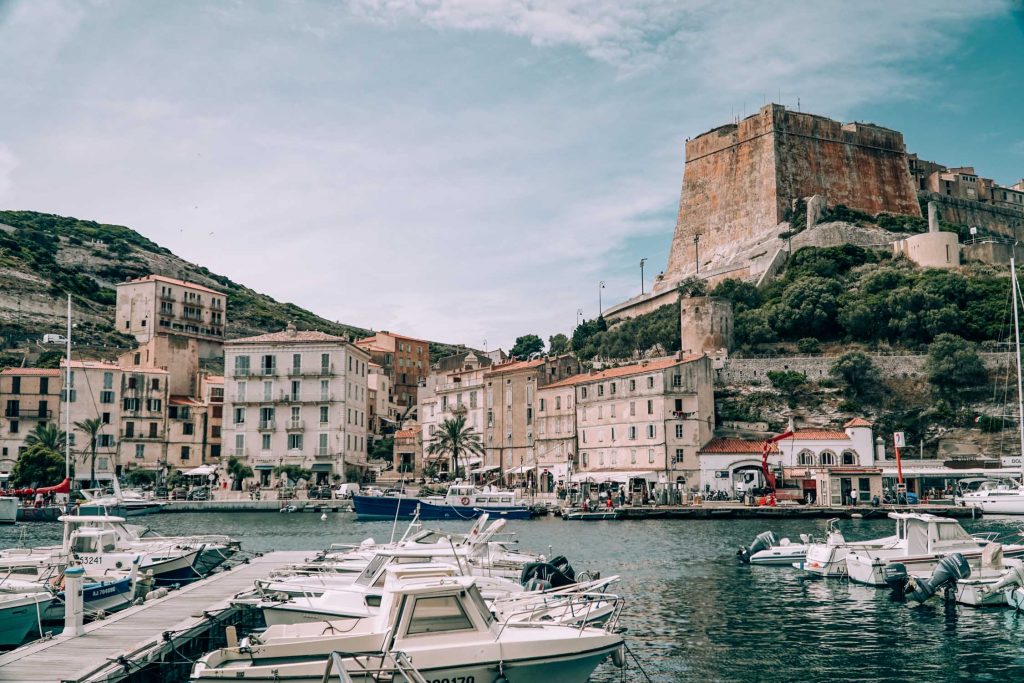
Where to Stay Near Figari
In total, nine vineyards can be found around Figari. Clos Canarelli is probably the most special, as they not only make wine, but also produce olive oil and rent out five villas named after Corsica’s endemic grapes. Each of these villas have their own pool and are therefore the perfect backdrop to wine-soaked nights.
Tip! When staying in Bonifacio, book a guided city tour to dive deep into its history
But Clos Canarelli is not the only vineyard that offers accommodation. Domaine de Peretti della Rocca is all about luxury wine tourism. Besides great wines, they not only offer hotel rooms and villas, but also have their own private dining restaurant which can even put a table for you amidst the vines. How romantic is that?
Clos Finidori, also known as Domaine de Piscia, is another vineyard in the Figari appellation that takes their wine tastings to the next level. Not only do they offer nature-infused rooms and cold bottles of rosé, they are also a fromagerie that of course serves their own cheese in their splendid restaurant.
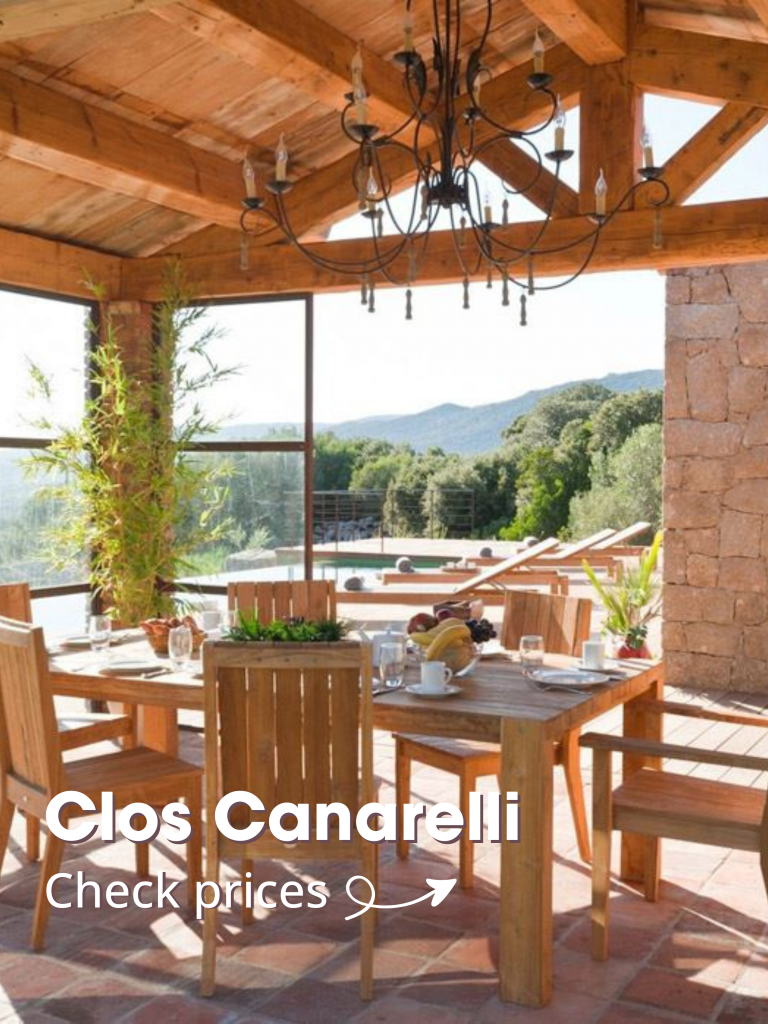

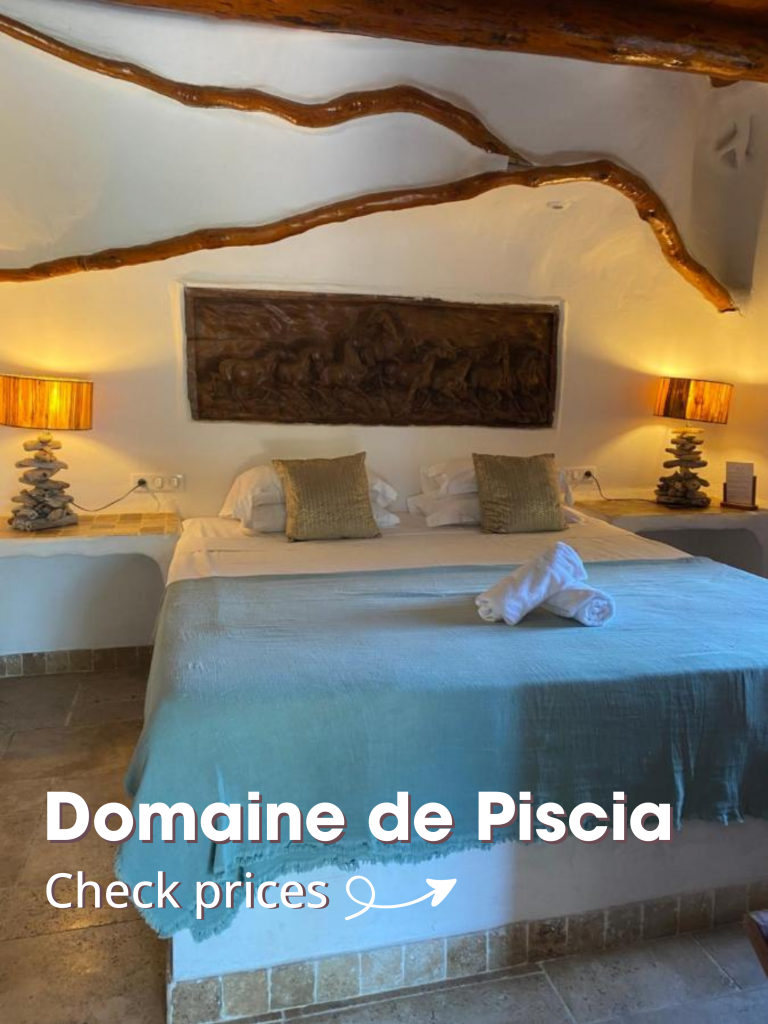
7. Corse Sartène
The region around Sartène is mostly known for the nearby village of Propriano and its beaches and yacht culture, but not many people know Sartène is also one of the village appellations of the Vins de Corse. With eight vineyards nestled in the Tizzano and Ortolo Valleys, its beautiful coastline is complemented by lush vineyards hugging the hills.
Its granite soil and several mesoclimates created by the friendly landscape make sure each vineyard has its own identity. The wines of Sartène tend to have a distinctive character with specific aromas typical for each mesoclimate.
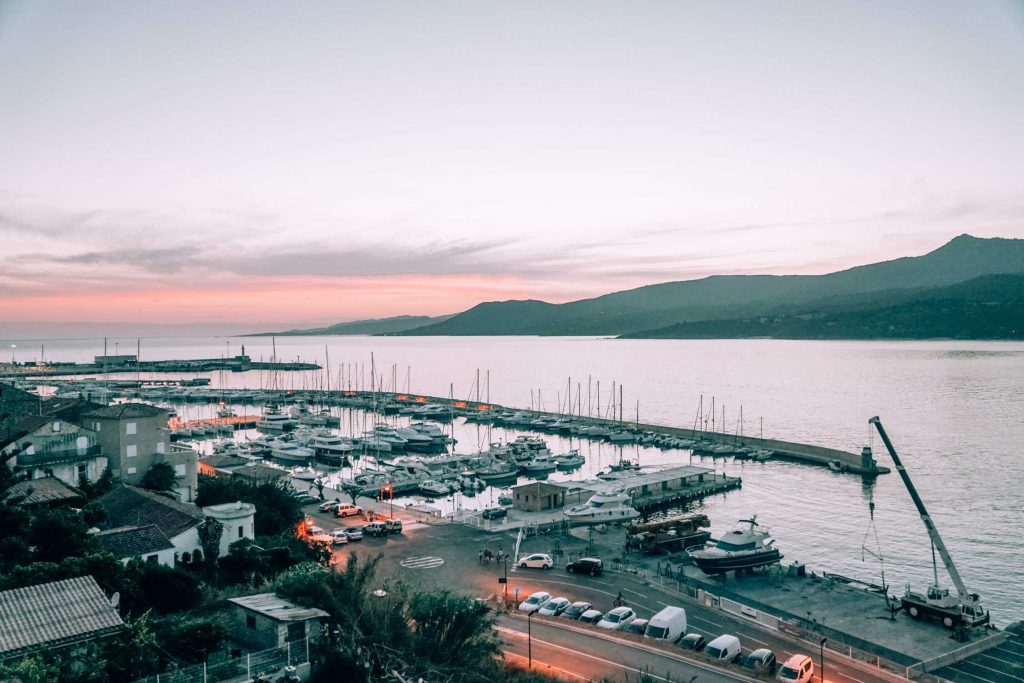

Its winemakers mainly produce red wines of the same grapes as those in Figari, but these reds largely resemble pinot noir wines due to the use of Sciaccarellu and its rosés are light and balanced. These rosés and the white wines, which range from full and floral to light and green, are perfect to eat with the fish that can be found aplenty in the region.
Consider visiting Clos Colonna, a family vineyard that only has an Instagram to do their marketing, the rest goes by word of mouth. You can make an appointment for a tasting (degustation) on said Instagram. Besides Colonna, Sant’Armettu is another great winery to visit. It is a fifth generation family vineyard that has dedicated itself to ensuring the legacy of Corsica’s endemic grapes. Their wines are described as coming directly from the maquis and they offer extensive tastings and tours, so you can learn everything about this beautiful estate.
Where to Stay in Sartène
Similar to Figari, Sartène has two vineyards that offer accommodation as well. Castellu di Baricci has rental villas that strongly resemble castles. Its limestone brickwork matches the cliffs of the coast and with a cold Vermentinu produced in the microclimate of their valley, you will feel right at home.
Domaine Saparale is complemented by a luxury hotel called Le Hameau de Saparale. Here, stylishly decorated rooms overlook not only the vineyard, but olive groves and citrus trees too. Whether you are looking for a seasonal meal, a massage or an e-bike tour after your wine tasting, they have it all! Opt for a room or a villa which they call “Sheepfolds” to make your wine tour complete.
Tip! When staying in Propriano, go canyoning in the nearby Baracci Canyon
If you are not staying at Castellu di Baricci or Domaine Saparale, I would suggest staying around Sartène itself, or near Propriano. If you like your own space, you could choose the Appart’Hotel Fior Di Ribba in Sartène, which offers spacious apartments. Hotel Des Roches is another great option, as it has gorgeous views of the hills and the city.
For more luxurious stays, Propriano is the place to be. Hôtel Marinca & Spa has it all: fancy rooms, a private beach, wellness and fine dining. The catch? The cheapest room costs around €700 per night in the summer. If you like Propriano’s class, but would like to save some money too, then book Résidence Guddelmoni, which offers you an entire villa for a quarter of the price.
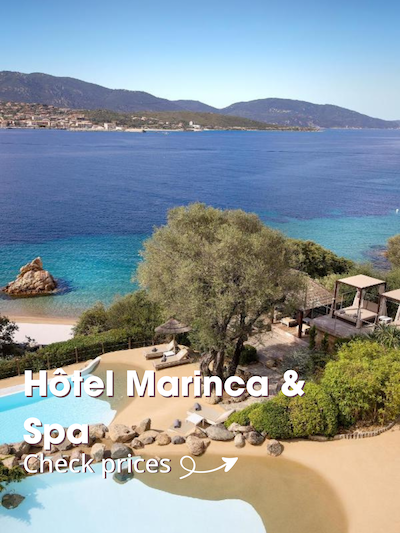
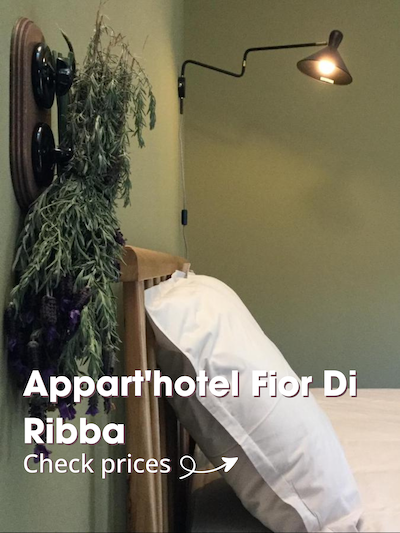
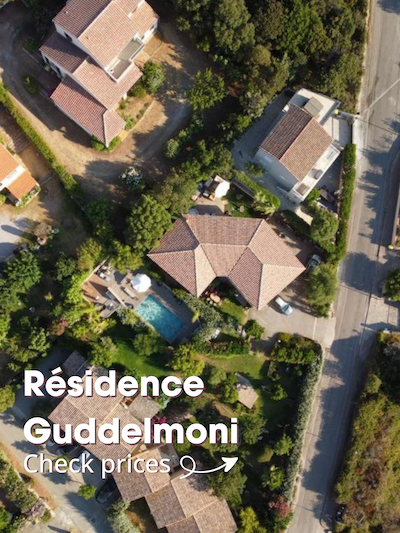
8. Ajaccio
Ajaccio should be world famous as it is the birthplace of Napoleon Bonaparte. While you can still visit his former home, Maison Bonaparte, Ajaccio might be more popular due to its wines, which, like Patrimonio, has the ‘Cru’ appellation as well. Besides one of Europe’s most notable figures, it is namely also the birthplace of the Sciaccarellu grape.
Tip! Get to know Ajaccio’s history by booking a walking tour when you are there
And this is noticeable in the wines, as 60% of the reds and rosés must be Sciaccarellu, which can be distinguished by its flavors of almond and black currant (according to Vins de Corse). The whites are mostly made of Vermentinu with a splash of Ugni Blanc, giving them that mineral and floral taste you also get in Provence. The altitude of the vineyards, which are the highest on Corsica, also allows for a cool ocean breeze and combined with the clay and granite soil, these wines tend to have a balanced structure.
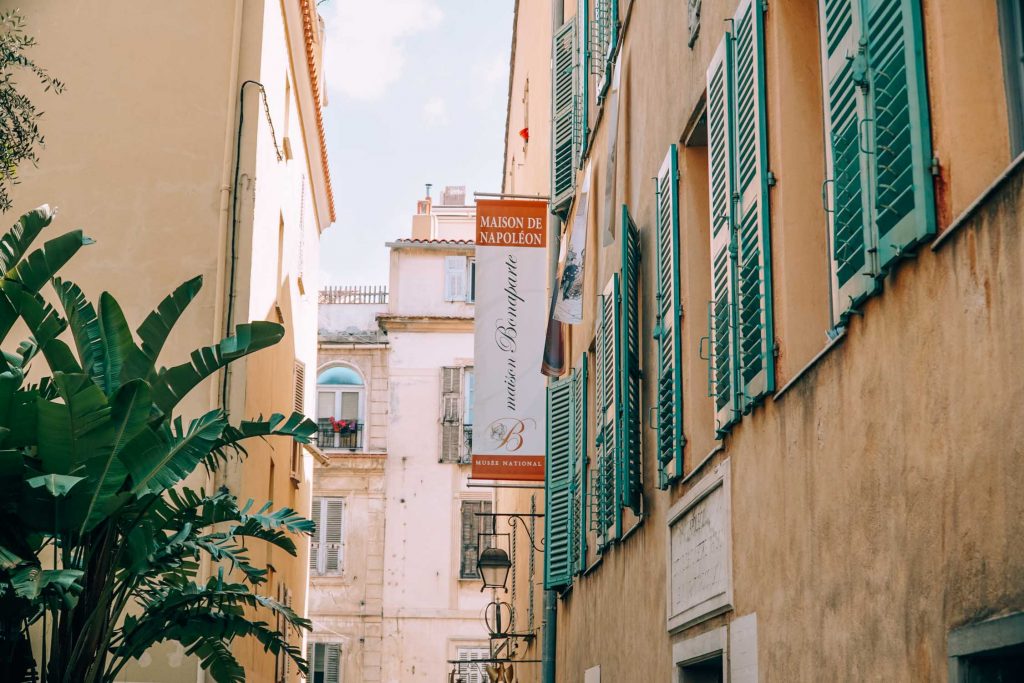

One of the most unique vineyards in the region is Domaine Tarra di l’Alpa, which produces both wine and honey. Clos Ornasca is another beautiful winery on the road to Sartène from Ajaccio. They even have been granted access to the Minustellu grape, which has been forgotten for most of Corsica’s wine history. Finally, Clos Capitoro a family estate where two daughters are simultaneously modernizing their wine making processes, as rediscovering ancient techniques.

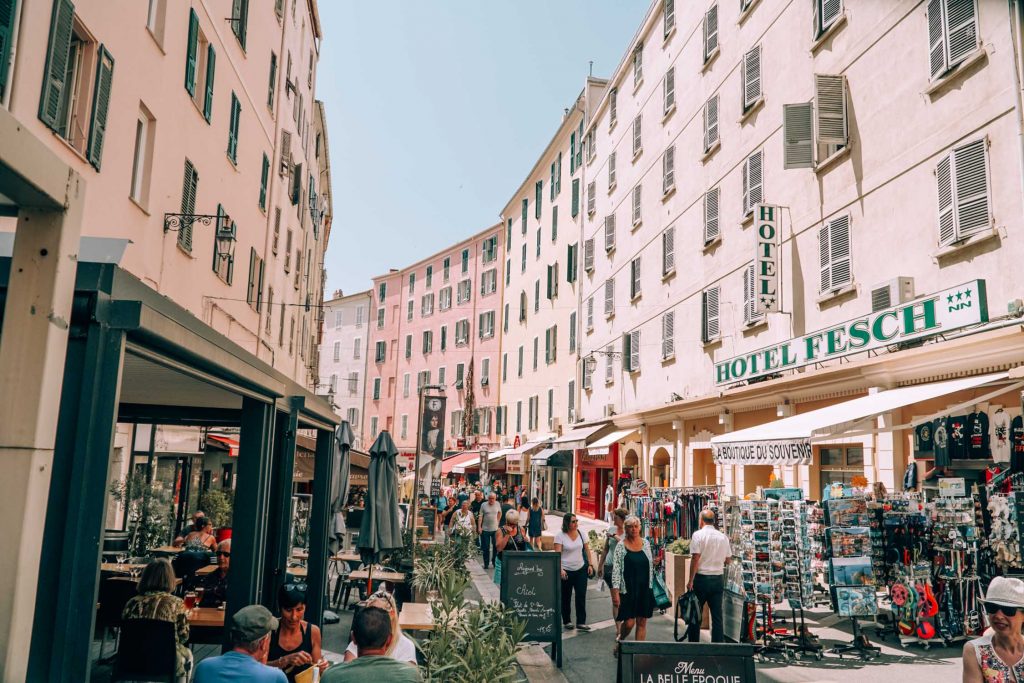
Where to Stay in Ajaccio
The west coast seems to be full of vineyards offering accommodation as well, with Domaine Comte Peraldi in Ajaccio being one of them. With a villa and a bungalow that you can book year-round, you can enjoy a glass of their lovingly crafted wines as a private chef prepares a meal fitting your glass of cool rosé.
Tip! Combine wine tasting with sunset sailing by booking this amazing tour
If you prefer to stay within the city of Ajaccio, then you must book a room at Hotel San Carlu. This boutique hotel is located in the citadel and, besides well-designed rooms, has a restaurant on its rooftop that overlooks the entire city. Staying here can be pricy however, so the centrally located Napoleon is another great and more affordable option.

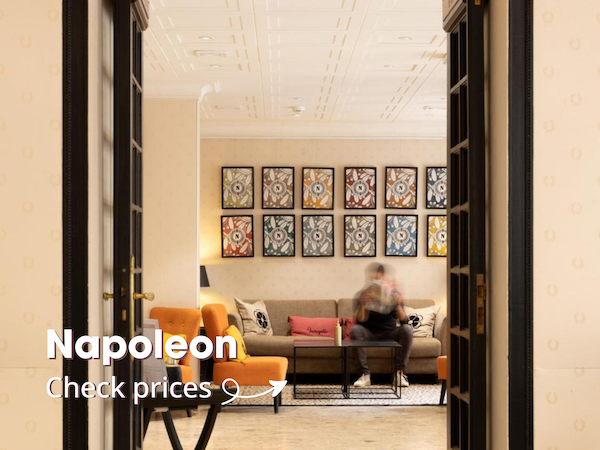
9. Corse Calvi
Calvi is the final AOP on Corsica and its citadel center from which you can see the Monte Cinto, Corsica’s tallest mountain, has been drawing travelers for decades. The vineyards stretch from the city itself to the nearby red cliffs of L’Île-Rousse, which is a popular spot for booking boat trips, often including food and wine. But, also known as the Balagne region, this AOP is one of the most ancient viticultures on the island, with the wines of the Romans and Benedictine monks as its ancestors.
Tip! Let someone else take care of you with this wine tour
Its meso- and microclimate allow for stable vine growing, aromatic flavors and, most importantly, organic winemaking. All ten vineyards of Calvi are certified organic and produce wines of both less common endemic grape, and the Niellucciu, Sciaccarellu, Grenache, and Vermentinu quartet. Its rosés tend to be fresh and clean, its whites citrusy and its reds are strong and full-bodied.


At Domaine Renucci you can taste delicious wines, but also sample their home grown olive oil. While you will have to call them to see if they have availability, at Domaine Maestracci you will have to fill out a specific form. Once you have had tried their wines, you can take a look at their suggested food recipes for your next meal.
Where most vineyards in the region are ancient, family estates, Clos Culombu is relatively young, as they started in 1973. This gives them a unique perspective on wine, which you can try in their modern home. Finally, at Domaine Alzipratu you can book one of three paid tours: a regular tasting, one tasting with food pairings, and a tasting of their vintages. Cannot choose? Then book a wine tasting around Calvi including a picnic in the fields, where everything is taken care of for you.
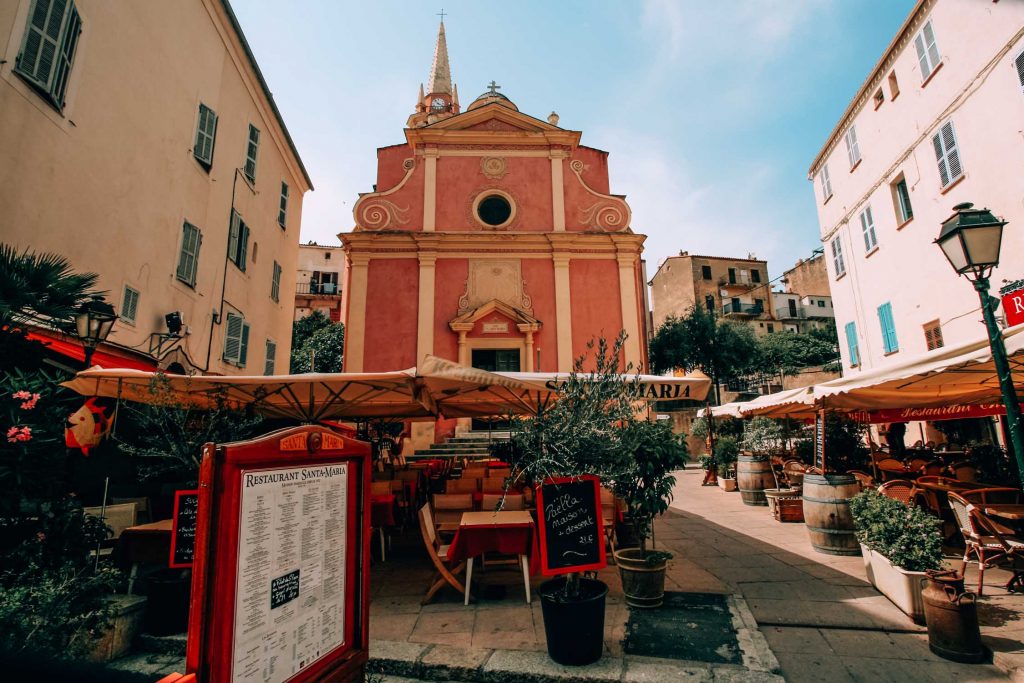
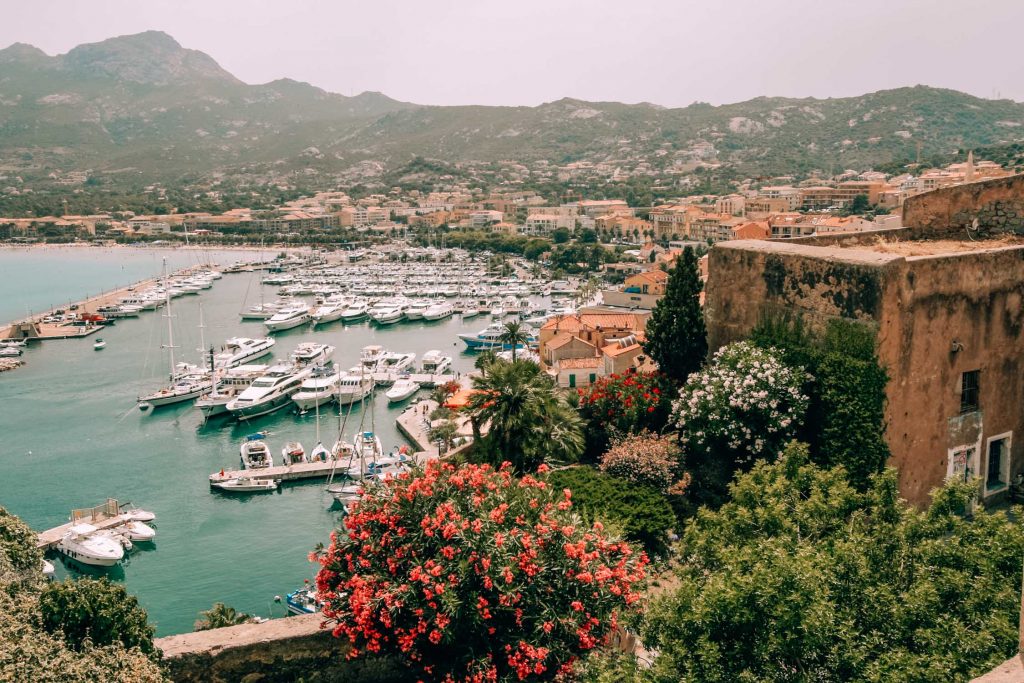
Where to Stay in Calvi
To visit all of Calvi AOP’s vineyards, it is best to either stay in Calvi or l’Île-Rousse. In Calvi’s citadel, you could stay at apartment Casa Santa, which has a balcony overlooking the city and where you can sip your newly bought rosés. Hotel Corsica & Spa on the other hand, offers amazing wellness treatments and serenity. Be aware that this one is more remote, but so worth it. If you would like to stay in the new city of Calvi, I would suggest Hotel Balanea, which has classic rooms that overlook the bay area.
Tip! When staying in Calvi, book a guided walking tour of the city
For some luxury, stay at Villa Josephine in l’Île-Rousse, which has a gorgeous pool, views of the hills and the city, and meticulous design that complements the nature surrounding it. Another luxe option is Hotel La Pietra, which has a spa and showcases creatively designed rooms on the tip of the peninsula. Finally, if you are willing to spend a little bit more, then consider Casa Paradisu, which has an infinity pool, and light and airy rooms.
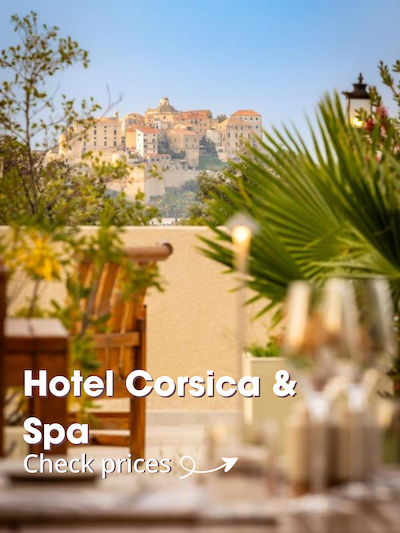
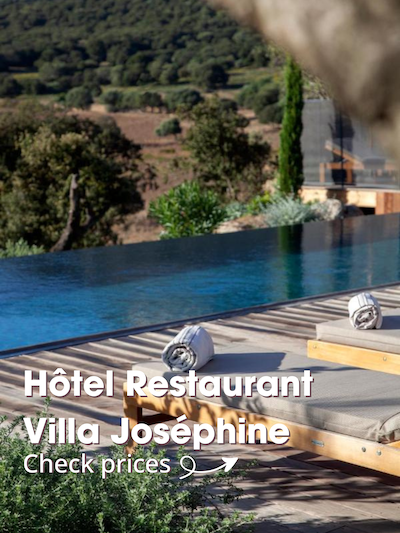
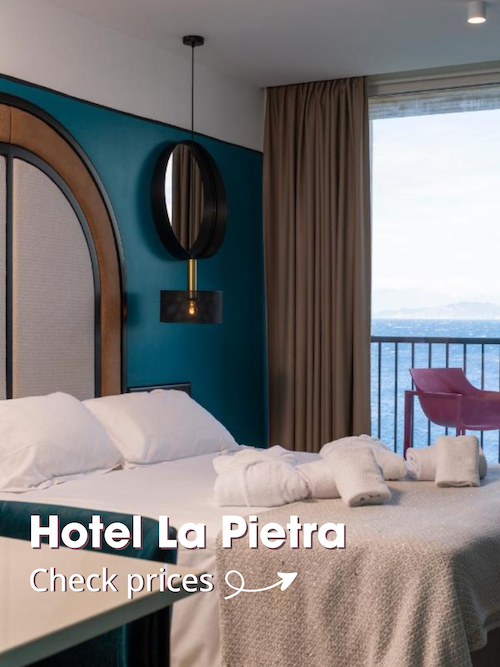
Corsica Wine Tasting Guide: Final Thoughts
Wherever you do your wine tasting, you will have an unforgettable experience with wines full of character and authenticity. We loved our experience with Clos Canereccia, which is my number one recommendation, but if I would do another wine tasting I would definitely book a room at one of the vineyards so I can fully immerse myself.
Once you have picked your wine destination, check out my East Corsica travel guide, to further shape your travels. If you would like to stay up to date with all of my Corsica guides, then sign up to my newsletter, or follow me on Instagram.


